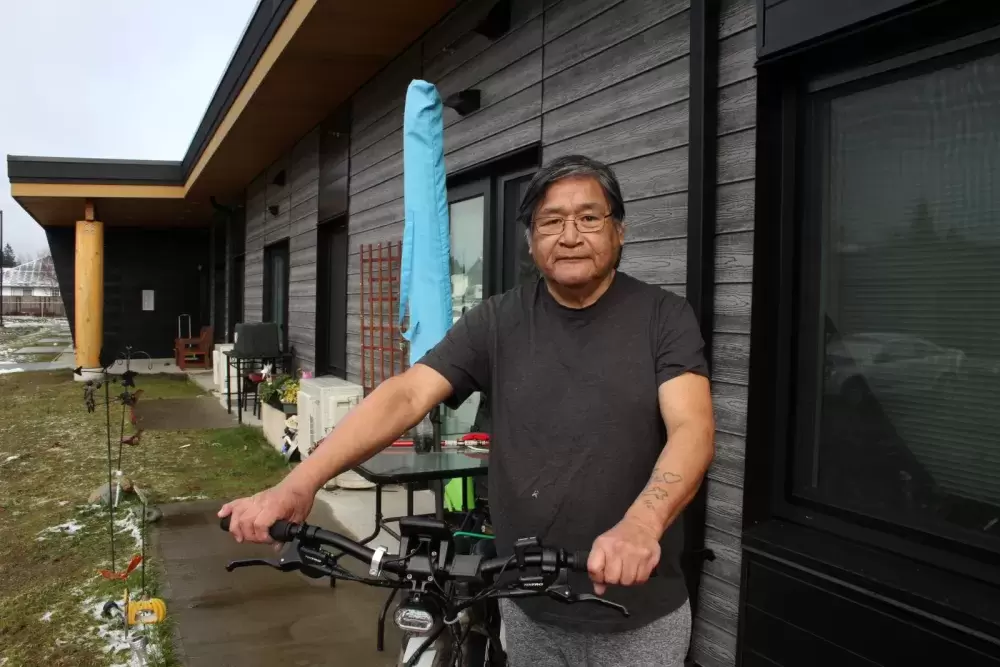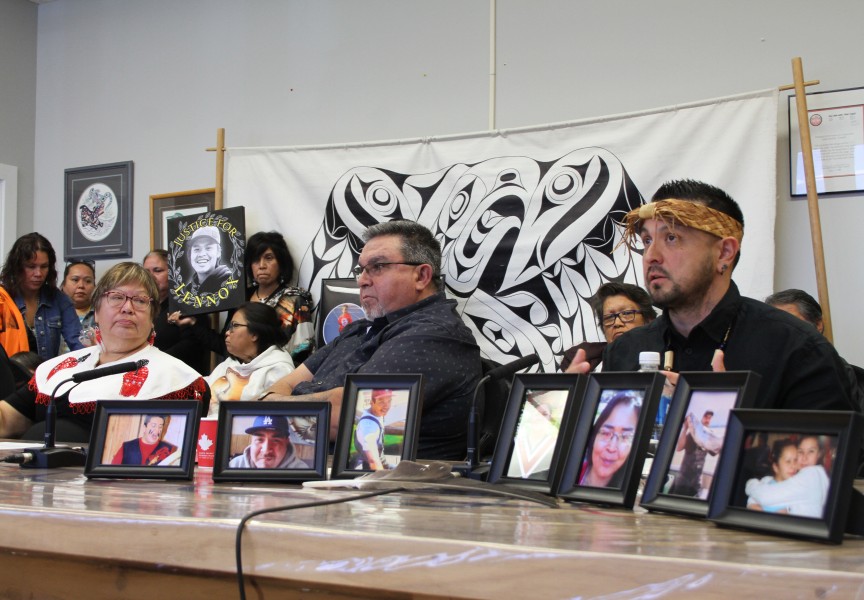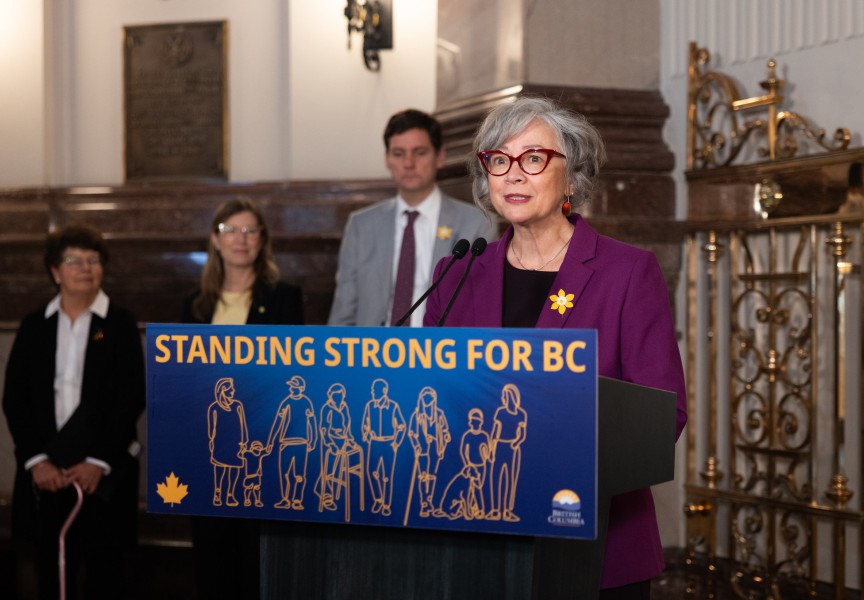A cane and leg brace sit near the entrance to Paul Sam’s apartment in Port Alberni. They’re familiar items for the 64-year-old, but also an indication of the empowerment Sam has gained during the last eight months over his Type 2 diabetes.
“I don’t use these anymore,” said Sam in a gentle, unrushed manner characteristic of his Ahousaht roots.
Having lost 45 pounds since last spring, Sam adds that he plans to give the cane to a friend who needs it in Tofino. Besides the weight loss, he’s also overcome low energy and constant pain that were characteristic of his medical condition.
“I got tired of being sore and tired of just no more energy,” said Sam, who recalls his diabetes developing over time, resulting in difficult symptoms for the previous nine years. “I used to be really active years ago. I used to be in forestry and logging and fishing, all that kind of stuff.”
People aren’t born with Type 2 diabetes, but the condition affects 90 per cent of those diagnosed with the disease. Contributing factors to acquiring Type 2 diabetes are having parents with the condition, stress, not enough sleep, a lack of activity and a diet with high quantities of refined carbohydrates, such as juice, soda and white bread.
National statistics from Diabetes Canada show that First Nations have at least double the five per cent rate reported for the general population, with even more prevalence for those living on-reserve.
“The impact of colonization is the main cause of diabetes,” said NTC dietician Rachel Dickens. “It didn’t really exist before the 1940s in Indigenous communities.”
Those afflicted can’t produce enough insulin, a hormone that helps control the amount of glucose – or sugar - in the blood. Glucose is the main source of energy for cells in muscles and other tissue, but if it isn’t managed with insulin this sugar can build up in the bloodstream. Type 2 diabetes leads to disorders of the circulatory, nervous and immune system, such as heart or kidney disease, skin infections, nerve damage – or even dementia.
As many were under lockdown during the anxious early months of the COVID-19 pandemic, Paul Sam became more active in an effort to reverse the progress of his condition. He was connected to Dickens through the tribal council’s nurse navigator, Leslie Cerney.
Dickens found funding for a Libre Flush Glucose Monitor, a quarter-sized devise stuck to the back of Sam’s upper arm that measures blood sugar levels 24 hours a day, without the usual finger pokes that diabetics resort to. The monitor can be scanned with a smartphone.
“In the beginning Paul had difficulty putting the sensor on himself because of the weakness in one of his hands, but now he can do it all himself,” said Dickens. “Wearing that, Paul was able to change his diet as well, seeing what spiked his blood sugars and what made his blood sugars go down.”
“When they scan with their phone, it also connects with my computer, so I can see their results,” she said. “There’s quite a few people in Ahousaht that are using the meter and having similar success with just learning what foods are good for them.”
Sam transformed what he eats, cutting out fatty and high-sugar food, instead relying on vegetables, a variety of local berries and mixed nuts to quell his appetite.
“I stay away from pastries and all kinds of junk food,” he said. “I don’t really have it here in my place or I’d eat it.”
He consumes some meat, but minimizes carbohydrate intake to better control his blood sugar level.
“For my dinner I just peel one potato. Sometimes I don’t even finish that if it’s a big potato,” said Sam. “When I buy bread, a loaf of bread, I put it in the freezer and pull off a couple of pieces for my toast in the morning. It stays in the freezer so I don’t keep on eating it.”
In Sam’s freezer small Tupperware containers are neatly stacked, each containing a carefully measured portion of a meal for future consumption. This discipline in controlling intake is maintained while eating out as well, said Dickens.
“When he goes to a restaurant he asks for a take-out container instantly, so he can put half of his portion away before he starts eating,” she said.
The other component to Sam’s transition is a steady reliance on moderate exercise. He began last year by walking his 230-pound frame around his apartment. Now at 185 pounds, he travels much further, often using an electric bicycle to take local trips. One of his favourite destinations is Paper Mill Dam park on the Somass River.
“If I can’t make it back home I use the motor on the bike,” said Sam. “I can ride a lot farther than I used to.”
A pair of light kettlebell weights lie at the ready on his floor, and Sam increased his initial output of four leg squats to 30. He’s seen others push themselves too hard to lose weight, then quit out of hunger. Sam points to the importance of keeping a balanced lifestyle, rather than working excessively hard towards his goals.
“I think he’s being very modest, he has worked very hard,” commented Dickens. “It’s right in that it’s not that hard to do. He still enjoys certain things and he’s not going to the gym for a crazy amount of hours or anything like that. He has been dedicated.”
Over the last eight months Sam’s daily supplemental insulin intake has declined from 65 units to 25. And his dedication to improved health has led to another mark of victory: weening himself off of pain medication.
“It’s next to nothing; I quit taking painkillers,” he said. “I let my body fight that pain. The painkillers are no good for me anyway. They’re no good for my liver, it gets me constipated. [Painkillers] just disconnects something in your brain - that pain is still there; your brain is just fooling you.”







